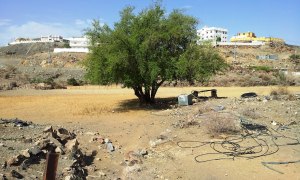 To appreciate this highly revered honey, one has to understand the story behind its tree. The Sidr tree, (also known as Lote tree, Christ’s Thorn, Jujube or Nabkh tree. Botanical name: Ziziphus spina-christi) is an ancient tree. It is believed that the Jujube fruit was the first thing Adam ate when he was made to descend to earth. The tree was used during the time of King Suleiman and the Pharaohs to build palaces and temples.
To appreciate this highly revered honey, one has to understand the story behind its tree. The Sidr tree, (also known as Lote tree, Christ’s Thorn, Jujube or Nabkh tree. Botanical name: Ziziphus spina-christi) is an ancient tree. It is believed that the Jujube fruit was the first thing Adam ate when he was made to descend to earth. The tree was used during the time of King Suleiman and the Pharaohs to build palaces and temples.
All of its parts have medicinal values. Its leaves are used as a herbal shampoo, to treat dandruff, head lice, swollen eyes, abscesses, furuncles and counter obesity. Mixed with warm water the leaves are used to clean the body since they are a disinfectant and the oil from the resin is deodorant. Its wood ash is used for the treatment of snakebites. Its fruits are found to have a very high energy value. Its seeds are rich in protein; its leaves rich in calcium, iron and magnesium. The root, stem bark are also used in various medicinal preparations. Other known medicinal uses include as a stomachic, an appetizer, an astringent and also as a cough medicine.
Plant Description:
Sidr tree is a sturdy and deep-rooted tree which has withstood the devastating floods of Eram at Ma’arib Yemen with two other trees: the Tamarisk and the Mustard Tree. Sidr belongs to the “Ziziphus” family of plants. The average tree size normally between 7-8 meters hight. Branches are soft with gray-yellow color. Flowers of the plant are Yellow and it has round and Yellowish fruits which turn to reddish color when mature.
Inhabitant:
Sidr plant grows in coastal, desert, and semi-desert areas. It grows in India, Pakistan, Ethiopia, Egypt, Libya, Sudean, and the southern part of the Arabian Peninsula, The plant grows extensively in the eastern part of Yemen.
Nitrition Value:
Fruits of sidr trees were found to have a very high-energy value. Only dates, figs, raisins, and few other dried fruits have a higher value. The seeds are rich in protein, and the leaves in Calcium, Iron, and Magnesium.